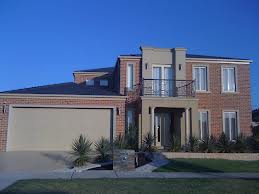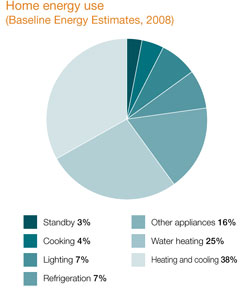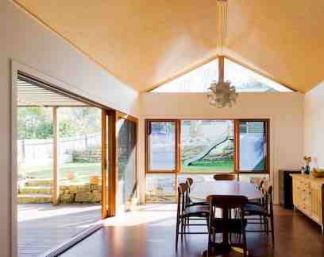Why the star rating of your house doesn't tell you the whole story.
For a while now the ongoing drive by legislators for higher and higher star ratings for new houses and renovations has raised questions for us. Star ratings are legislated around the country and there is no doubt that since introduced, mandatory star ratings have increased the sustainability of houses. The benefits of higher star ratings , for example natHERS, is obvious, less energy usage for heating and cooling. The star rating system has certainly brought the bottom up, apalling houses such as the one below are no longer being built.
But a star rating doesn't give you the whole story of the environmental performance and sustainability of your house though.

It is simply ridiculous to think that a 7 star McMansion of 400m2 is a more sustainable house than a smaller, 200m2 5 star house.
The advent of the star rating system has lead many consumers to believe that having a higher star rating means their house is a more sustainable design and build than a comparable house with a lesser star rating. But this is simply not true. A natHERS star rating only takes into consideration the anticipated energy usage required to HEAT and COOL a home.
But, what about all of the other energy usage in the home you may ask? We know that heating and cooling statistically uses a large amount of energy in your home, around 40%, but this still leaves around 60% of the energy usage unaccounted for. Water heating typically uses 25%, refrigeration and lighting 7% each and other household appliances around 16%.
A star rating does not even consider these nor take them into account. Neither are the materials used for construction or the size of the dwelling and its carbon footprint considered.
 your home.gov.au
your home.gov.au
Lifestyle choices of the occupants can have a significant impact on how a house actually performs compared to how it was modeled at design stage. A 5 star rated house with fully engaged occupants who will simply put on more clothing in winter and happily be warmer in summer, may be a more energy efficient, sustainable house than the 7 star rated house whose occupants use heating and cooling all year round.
So we have come to the conclusion that a more wholistic 'whole of house' approach is requried for us to be satisfied with the sustainability of our projects. We have recently started having Life Cycle Assessments (LCAs) carried out for each project. In short a LCA is an assessment of the carbon footprint and energy usage of your project over its lifecycle tested against a 'standard' house.
A life cycle assessment takes into consideration the materials used for construction, the energy usage, the size of house, the number of occupants, the carbon footprint and greenhouse gas emissions. These are all assessed against the anticipated life span of a house, which is typically from 50-65 years. To give you an example, a LCA can quantify the environmental performance difference between the carbon heavy building made from concrete of brick with that of the timber framed house made from locally sourced or recycled materials. A LCA may help you decide whether to renovate an existing house or demolish and build anew.

In the quest for the most sustainable house possible we must not forget that a house must be designed and built well and be a pleasure and joy to live in. If your house has high environmental credentials but it is just unpleasant to live in because it is poorly designed or poorly built then no amount of energy saving measures will offset the carbon assosiated with the house being demolished and rebuilt in only 20 years.
